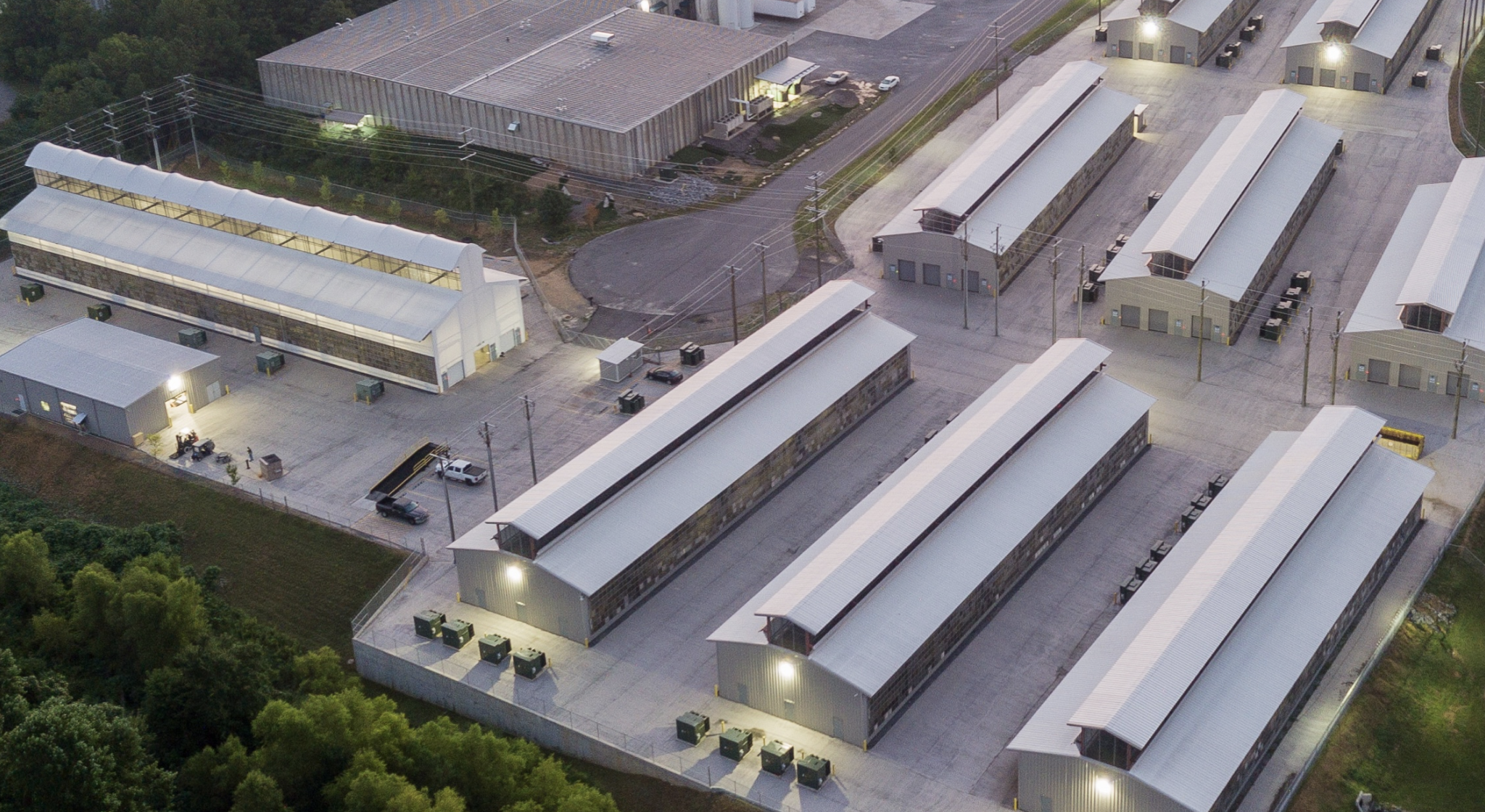
The end of downtime in bitcoin mining
How modular design and flexible infrastructure can transform mining operations for the better
Imagine this scenario:
You oversee a data center with dozens of bitcoin mining rigs operating simultaneously. Everything is running smoothly when a hashboard, somewhere among rows and rows of machines, fails.
For many mining operators, this scenario isn’t really imaginary. And neither are the associated costs.
A faulty hashboard might mean taking an entire rig offline, shipping it off to be diagnosed and repaired, and waiting days or weeks for its return–the costs of which all add up, on top of the cost of downtime itself, which grows with every passing minute.
The difference between weeks and minutes
In a mining economy where margins can be tight, maximizing uptime and minimizing costs is everything. But most rigs are still built for mining’s past–a past where shoebox-style machines had to endure harsh environments and constant relocation, from the frozen plains of Mongolia to the humid jungles of Southeast Asia. Miners were meant to be moved and their design reflected that.
Today’s mining operations more closely resemble modern, large-scale data centers with specialized infrastructure. When mining rigs more or less stay put, portability becomes secondary. Prime are reliability and flexibility–qualities that enable miners to not only maintain maximum uptime, but to adapt quickly to market volatility, optimize operations and upgrade cycles, and reduce environmental impact.
Modular design and flexible infrastructure, at both the component and the chip level, can be the difference between days or weeks of downtime and essentially none at all.

Modular design maximizes uptime
At the center of modular design and flexible infrastructure is a relatively straightforward question: what if, instead of having to physically remove malfunctioning machines and send them to a repair facility, it was possible to easily swap out faulty components right there on the rack?
For instance, a machine designed for hashboards to be easily replaced or upgraded–without the need to remove it from the rack or ship it off to a specialist for repairs–would shrink downtime to minutes and lower or eliminate the associated costs.
And this is more than hypothetical. It’s an insight born from close collaboration with industry leaders.
Our partnership with Core Scientific has led to valuable feedback on our existing innovative chip and machine design. Armed with this knowledge, we are now designing next-gen machines that maximize uptime, profitability, and infrastructure operability while minimizing common points of failure–designs that mean no miner goes offline for an extended period over a faulty hashboard or a $0.90 fan.
Benefits beyond repairs
The benefits of modular design and flexible infrastructure extend beyond what happens when something breaks.
In a market where bitcoin’s hash price fluctuates as rapidly as its value, flexibility is paramount. Modular systems allow miners to respond to changes in power prices and hash rates dynamically, prioritizing efficiency. With modular designs, the process becomes swapping or moving hashboards instead of disassembling entire rigs–a process that is far less labor and capital intensive.
Upgrading, too, becomes a matter of changing components rather than entire systems. When chassis, fans, and power supplies can be retained in favor of swapping out chips or hashboards, the cost to upgrade drops dramatically.
This flexibility also reduces environmental impact. By enabling component upgrades instead of full system replacements, modular systems significantly reduce e-waste. And by optimizing logistics, they can lower an operation’s carbon footprint–a critical consideration as mining faces scrutiny over its energy use.
Proto’s chips play a key role here. We are not only integrating the chips into our own hardware systems, but also actively seeking opportunities to collaborate on new solutions with experienced operators.
Bringing modular, flexible infrastructure to life
From the early days of shoebox-style rigs to today’s industrial-scale data centers, the journey of bitcoin mining reflects the resilience and adaptability of the industry. Yet, the challenges of scaling while remaining efficient and sustainable are more pressing than ever. Addressing these demands requires a departure from traditional mining designs and a move toward modular, flexible infrastructure—a vision that Proto is committed to bringing to life.
Ultimately, large-scale mining isn’t just about deploying next-gen machines; it’s about designing systems that can scale efficiently while minimizing downtime and costs. Listening carefully to our partners' insights, our team is on track to reimagine traditional form factors, combining access to our chip technology with our hardware expertise and the invaluable knowledge of our partners.
Together, we’re pioneering efficient, sustainable, and adaptable systems that reduce the total cost of ownership over time and simplify mining operations. As bitcoin grows, we are building on lessons of reliability and flexibility to benefit miners and the broader ecosystem.
Authors
Stay in the loop
Subscribe to receive new post alerts and provide direct feedback to our team.